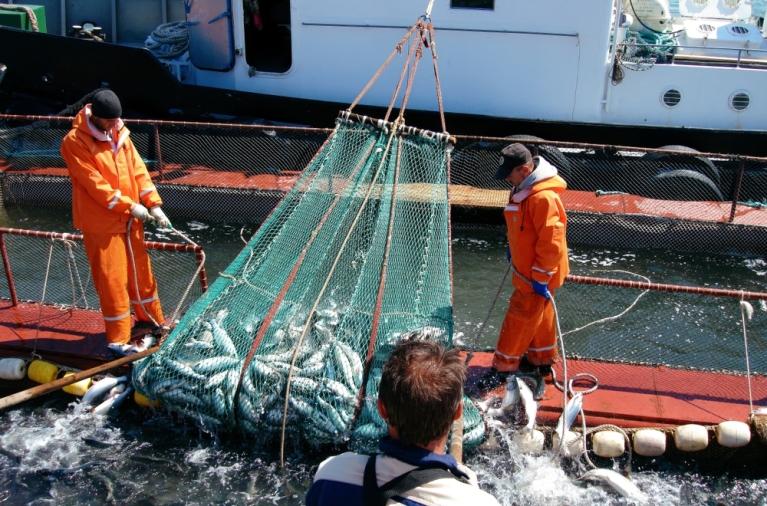
Policies and procedures are created and implemented to prevent GBVH in the workplace.
GBVH is a sensitive human rights and occupational health and safety (OHS) risk that can be hard to detect. Workers and other stakeholders such as communities understand the risks they face and how business activities may impact on their right to safety. Engaging with them, with additional support from local experts like trade unions and gender-focused NGOs, helps create solutions grounded in the social and cultural context of business operations. This approach ensures root causes, including power dynamics, are addressed, and actions are aligned with local laws and values, helping everyone understand their rights and responsibilities.
4.1 Engage with workers for a gender responsive and victim and survivor centric approach.
- Develop and align policies and procedures with the strongest protections for workers from international standards or national law. Create separate policies and procedures or include GBVH into existing ones, and in unionised workplaces, develop CBAs that clearly state expectations for how GBVH should be addressed. Cover all due diligence steps and ensure inclusion of non-retaliation against victims and survivors, formal and informal grievance mechanisms, GBVH case handling, investigation, remediation and discipline.
- Develop policies and procedures (including on GBVH, recruitment/hiring, grievance, remediation and disciplinary) with workers and their representatives/trade unions.1 Consider the views and experiences of those at greatest risk of GBVH based on the context such as women workers, especially those in relatively low positions of power, and LGBTQI+ workers.
- Work with supply chain partners and external stakeholders, like trade unions, NGOs and gender experts for input, guidance and training when developing and implementing policies and procedures.
- Consider the risk for retaliation outside of the workplace and address it in policies and procedures. Where needed, consult NGOs or community members to understand root causes and ensure culturally appropriate solutions.
- See Principle 10.1 regarding monitoring of the effectiveness of implementation with workers, worker representatives/trade unions and other stakeholders.
4.2 Assess GBVH as a workplace and OHS risk with workers.
- Identify physical and psychosocial hazards and assess GBVH risks with workers, worker representatives/trade unions, and workplace committees,2 if they are in place, and other affected rightsholders, including communities, as applicable.
- Support victims and survivors of domestic abuse where possible, including with referrals to specialist services and help to stay in work. As a form of GBVH, domestic abuse within families and personal relationships, may impact workers and their performance in the workplace. If perpetrators are also workers, they should be held
accountable for any GBVH committed on business premises and with business property.
Workers at risk of GBVH may include women workers, LGBTQI+ workers, migrant workers, temporary/seasonal workers, contract workers, informal workers, young workers, workers with disabilities and learning difficulties, workers from non-dominant ethnic communities, workers who are not fluent in the main operating language (including that of management), workers from minority or marginalised backgrounds. Workers may experience multiple vulnerabilities such as being both a woman, migrant and temporary worker.
Where employers provide accommodation to workers and their families, children and young people should be considered alongside workers at risk.
Hazards and risks that involve the following require particular attention: arising from working conditions (e.g. pressure to meet targets and deadlines, low pay, unstable availability of work) and arrangements (e.g. late shift patterns, lone working), work organisation (e.g. assigning tasks) and human resource management (e.g. recruitment, promotion, performance review, annual appraisals, awarding bonuses); involve third parties (customers, service providers, contractors and labour providers); and arising from discrimination (e.g. based on gender, ability, ethnicity, trade union affiliation etc.), abusive power dynamics (e.g. manager – worker, customer/buyer – supplier, recruiter - jobseeker), and harmful gender, cultural or social norms (e.g. normalisation of sexual violence, victim blaming).
Perpetrators may include colleagues, but especially anyone in a position of power or authority over a worker such as those recruiting (supervisors sent out to recruit, labour providers) or referring jobseekers (e.g. other workers from the same town), security guards, supervisors, line-managers, managers, accommodation wardens, and third parties such as clients, service providers.
4.3 Ensure transparency and accountability in worker-related decisions to reduce the risk of perpetrators committing GBVH.
- Ensure decisions are transparent and based on objective criteria (e.g. gender neutral) and avoid concentration of power and authority in individuals without oversight.
- Use joint decision-making (e.g. committees) for high-risk processes like recruitment, promotion, and performance reviews.
4.4 Communicate and promote preventative policies and procedures to workers at risk.
- Proactively use internal communications to encourage reporting and regularly engage with workers and their representatives/trade unions to assess understanding of prevention measures.
- Confirm at risk groups of workers (such as temporary workers, job seekers, migrants) are fully informed of grievance mechanisms, which should be designed to ensure confidentiality/anonymity, safety, support and protection from retaliation with accessible information provided during interviews, pre-departure training and inductions (See Principle 7.1).
4.5 Engage with workers and other stakeholders about the implementation of relevant policies and procedures through regular training and monitoring.
- Regularly train all workers, including supervisors and managers, on GBVH policies, reporting procedures, and consequences for violations, using accessible methods,3 including opportunities for reflection and feedback from workers.
- See Principle 10.1 regarding monitoring and evaluating the effectiveness of policies and procedures.
- Include community members in training on the GBVH policy and key procedures (recruitment, grievance mechanisms, remediation) where they are an affected rightsholder or key stakeholders (see Principle 8 on grievance mechanisms).
